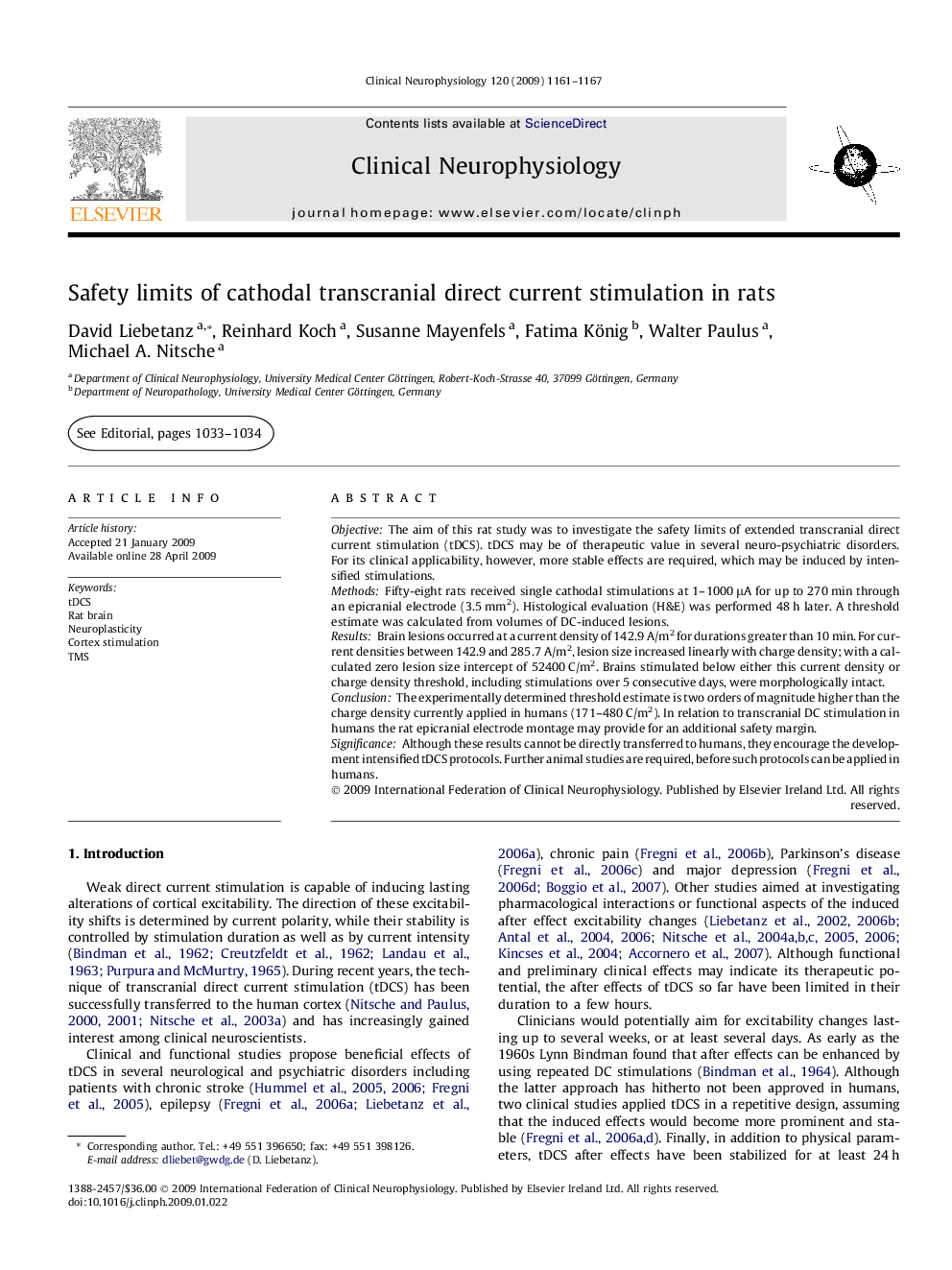| Article ID | Journal | Published Year | Pages | File Type |
|---|---|---|---|---|
| 3046538 | Clinical Neurophysiology | 2009 | 7 Pages |
ObjectiveThe aim of this rat study was to investigate the safety limits of extended transcranial direct current stimulation (tDCS). tDCS may be of therapeutic value in several neuro-psychiatric disorders. For its clinical applicability, however, more stable effects are required, which may be induced by intensified stimulations.MethodsFifty-eight rats received single cathodal stimulations at 1–1000 μA for up to 270 min through an epicranial electrode (3.5 mm2). Histological evaluation (H&E) was performed 48 h later. A threshold estimate was calculated from volumes of DC-induced lesions.ResultsBrain lesions occurred at a current density of 142.9 A/m2 for durations greater than 10 min. For current densities between 142.9 and 285.7 A/m2, lesion size increased linearly with charge density; with a calculated zero lesion size intercept of 52400 C/m2. Brains stimulated below either this current density or charge density threshold, including stimulations over 5 consecutive days, were morphologically intact.ConclusionThe experimentally determined threshold estimate is two orders of magnitude higher than the charge density currently applied in humans (171–480 C/m2). In relation to transcranial DC stimulation in humans the rat epicranial electrode montage may provide for an additional safety margin.SignificanceAlthough these results cannot be directly transferred to humans, they encourage the development intensified tDCS protocols. Further animal studies are required, before such protocols can be applied in humans.
